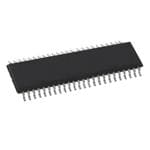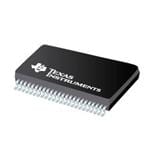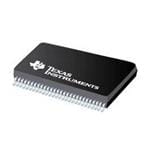MSP430FR203
Ultra-low-power 16-bit microcontrollers with FRAM and SRAM memory
Manufacturer: ti
series introduction
# Introduction to the MSP430FR203 Product Series
## 1. Overview
The MSP430FR203 product series is a remarkable offering from Texas Instruments, belonging to the MSP430 family of ultra - low - power microcontrollers. These microcontrollers are designed to meet the diverse needs of modern embedded systems, offering a balance of high performance, low power consumption, and integrated features.
## 2. Key Features
### 2.1 Ultra - Low Power Consumption
- **Multiple Power Modes**: The MSP430FR203 series features several power modes, including active mode, standby mode, and various levels of sleep modes. In standby mode, the microcontroller can consume as little as a few microamps, making it ideal for battery - powered applications such as wireless sensors, wearable devices, and remote monitoring systems.
- **Low - Power Oscillators**: It is equipped with low - power internal oscillators that can operate with minimal power consumption. These oscillators provide clock sources for the microcontroller, allowing it to function efficiently even in power - constrained environments.
### 2.2 Memory and Storage
- **FRAM Technology**: The MSP430FR203 series utilizes Ferroelectric Random - Access Memory (FRAM). FRAM combines the high - speed read/write capabilities of SRAM with the non - volatility of Flash memory. This means that data can be written to FRAM at high speeds (up to 100 times faster than traditional Flash memory) with very low power consumption.
- **Memory Sizes**: The microcontrollers in this series come with different FRAM memory sizes, typically ranging from a few kilobytes to tens of kilobytes. This provides flexibility for different application requirements, whether it's storing small amounts of configuration data or larger programs.
### 2.3 Processing Power
- **16 - Bit RISC CPU**: The MSP430FR203 is powered by a 16 - bit Reduced Instruction Set Computing (RISC) CPU. This architecture offers a good balance between processing power and power consumption. The CPU can execute instructions quickly, enabling the microcontroller to handle complex tasks such as data processing, sensor interfacing, and communication protocols.
- **High - Speed Operation**: It can operate at relatively high clock speeds, allowing for fast data processing and real - time response. This is crucial for applications that require quick decision - making, such as motor control and industrial automation.
### 2.4 Peripherals
- **Analog - to - Digital Converter (ADC)**: The series includes an integrated ADC, which can be used to convert analog signals from sensors (such as temperature sensors, pressure sensors, etc.) into digital values. The ADC typically has a high resolution and a fast conversion rate, enabling accurate and timely data acquisition.
- **Timers and Counters**: Multiple timers and counters are available, which can be used for a variety of purposes, such as generating PWM signals for motor control, measuring time intervals, and implementing periodic tasks.
- **Communication Interfaces**: The MSP430FR203 series supports various communication interfaces, including Universal Serial Communication Interface (USCI), which can be configured as UART, SPI, or I²C. These interfaces allow the microcontroller to communicate with other devices, such as sensors, actuators, and communication modules.
## 3. Applications
### 3.1 Internet of Things (IoT)
- **Wireless Sensor Nodes**: The low - power consumption and integrated communication interfaces of the MSP430FR203 make it an excellent choice for wireless sensor nodes in IoT applications. These nodes can collect data from various sensors (e.g., environmental sensors, motion sensors) and transmit it wirelessly to a central server for further
Images for reference

Image Preview

Image Preview

Image Preview